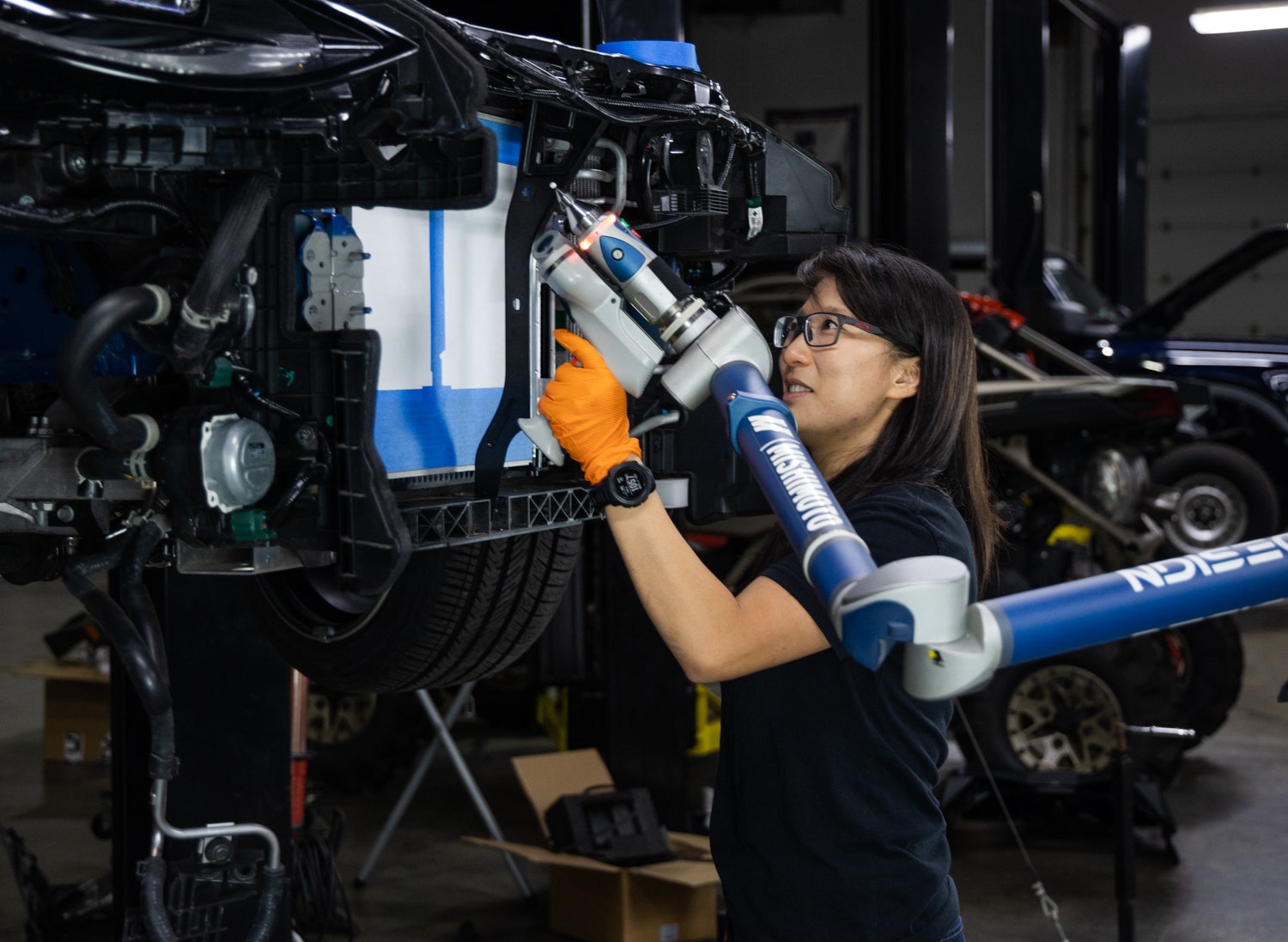
Consistent Performer – 2022+ Nissan Z Performance Heat Exchanger R&D, Part 1 – Design Plans
What makes a car so alluring? Sure retro-modern styling combined with a power-hungry powerplant draw you in, but what keeps you in the driver’s seat? Consistency. Sports cars like the Z are intended for those with a lead foot and a need for speed, so keeping things consistently cool is imperative. Let’s face it. There’s no worse torture to an enthusiast than having to feather the throttle on their high-strung sports car because of looming high temperatures. Nissan knows this, and while they did their best to set the Z up for intercooling success, the heat exchanger still needs an overhaul for what we enthusiasts have in store.


Air-to-water intercooling is how every teacher envisioned group projects. Instead of one person doing the work the whole group takes credit for, every member performs their role while playing to each other’s strengths and weaknesses to reach a common objective. In this group project, the intercoolers may get most of the credit, but the heat exchanger is really the one doing most of the work. For those unfamiliar with the specifics of an air-to-water intercooling system, basically, heat is transferred twice. First, the heat from the charged air is absorbed by the coolant passing through the intercoolers, and then that heat is dissipated once the coolant cycles through the heat exchanger. As the boost increases with tunes or bigger turbos, so does the heat, so upgrading the intercoolers is an essential means of managing intake air temperatures, but ensuring the heat is properly dissipated from the system entirely is a higher priority. For a more in-depth look at air-to-water intercooling compared to other methods, make sure you check out our tech post:
Air-to-Air vs. Air-to-Water Intercooling
By now, the VR30DDTT has already become a staple in Nissan’s performance lineup. Although their engineers might have updated the heat exchangers from the miniature units found on the Q50 and Q60, there’s still room for improvement. Even with the upsized core, this design is still prone to heat soak during spirited drives or even just sitting in traffic on a hot day.
Coupled with the OEM design’s hot-headed behavior is this radiator’s questionable durability. In typical OEM fashion, the stock unit equipped with the Z combines an aluminum core with plastic injection-molded end tanks. This construction provides the perfect balance between heat dissipation and inexpensive manufacturing that may increase Nissan’s bottom line but at the cost of snubbing the Z’s potential. Plastic has come a long way over the years, but it still has its faults, especially when it comes to repeated heating cycles. Over time this plastic can break down, leading to leaks or even disintegrating connection points, and brittle inlets aren’t ideal for maintaining intake air temperatures.


The Q50 might have paved the way for the latest Z and even carried over a few components, but some things are not transferrable. For example, our first inclination was to bolt our Q50 performance heat exchanger to the front of the Z but remodeled front end didn’t leave much room for our previous design. Instead, Nissan needed to pack a lot of cooling into the bow of the Z, which entailed a heat exchanger design that left space for the transmission cooler. So, we tasked our engineer, Ye, with applying that same performance in a new design bespoke to the Z.


Ye’s design process starts with a 3D scan of the Z’s front end. Then, with the help of our Faro Design ScanArm, she can generate a scale digital replica of the vehicle. Within this virtual workspace, Ye can precisely devise an improved cooling method for the VR30’s intercooling system even after the Z leaves our facility.




When it comes to radiators, size matters, especially when it comes to core volume and the external fin surface area, and we’re adding to both. To put it simply, adding to the core’s volume means that the heat exchanger can cool a larger quantity of fluid as the air passes through the fins. Likewise, the extended fin surface area only furthers a radiator’s cooling efficiency by spreading the core’s volume over a larger surface. With our added height and width to our core design, we calculated a 140% bump in core volume and a 62% increase in fin surface area. By spreading this larger volume out over a greater area, this design is much more efficient at cooling the increased system fluid capacity.


While size is essential to the heat exchanger’s performance, the beauty of this design is more than skin-deep. For starters, to further optimize performance, we’re incorporating a louvered fin design on this heat exchanger. This fin design amplifies the heat dissipation effect by directing the air to flow through the core diagonally, with the extended contact extracting more heat from the coolant. We’re also planning on a full-aluminum construction, mitigating the risk of deteriorating plastic entirely from the equation. Finally, to top things off, our design will also feature a removable inlet to simplify the installation process.
Consistency is key to the performance of any vehicle, especially one with the Z’s reputation. Nissan might have pulled out all the stops to keep its VR30 powerplant cool, but the stock heat exchanger will have trouble keeping up with we enthusiasts’ demands. Make sure that you stay tuned to get the first look at our completed design coming soon.
Thanks for Reading!
-Nick




